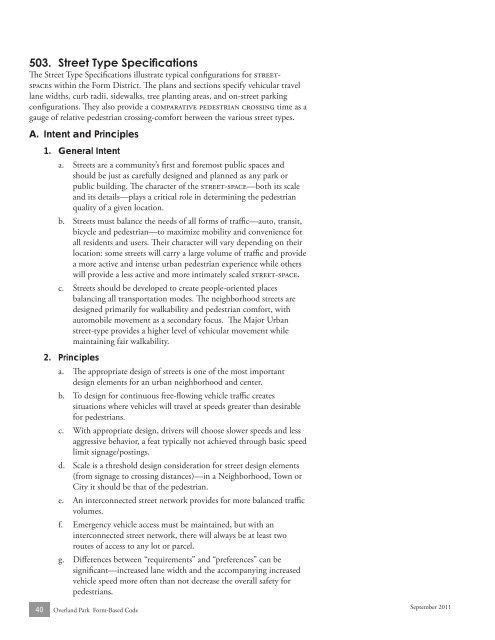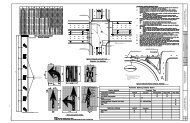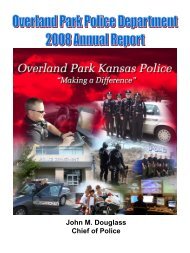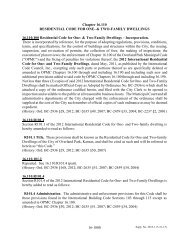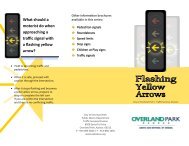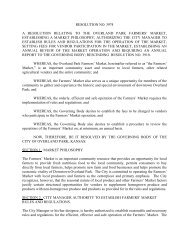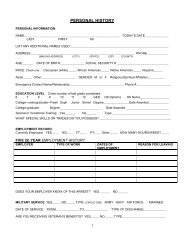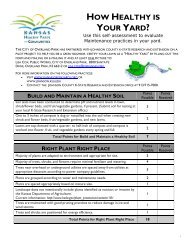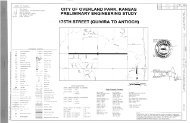Downtown Form-Based Code - City of Overland Park
Downtown Form-Based Code - City of Overland Park
Downtown Form-Based Code - City of Overland Park
- No tags were found...
You also want an ePaper? Increase the reach of your titles
YUMPU automatically turns print PDFs into web optimized ePapers that Google loves.
503. Street Type SpecificationsThe Street Type Specifications illustrate typical configurations for streetspaceswithin the <strong>Form</strong> District. The plans and sections specify vehicular travellane widths, curb radii, sidewalks, tree planting areas, and on-street parkingconfigurations. They also provide a comparative pedestrian crossing time as agauge <strong>of</strong> relative pedestrian crossing-comfort between the various street types.A. Intent and Principles1. General Intenta. Streets are a community’s first and foremost public spaces andshould be just as carefully designed and planned as any park orpublic building. The character <strong>of</strong> the street-space—both its scaleand its details—plays a critical role in determining the pedestrianquality <strong>of</strong> a given location.b. Streets must balance the needs <strong>of</strong> all forms <strong>of</strong> traffic—auto, transit,bicycle and pedestrian—to maximize mobility and convenience forall residents and users. Their character will vary depending on theirlocation: some streets will carry a large volume <strong>of</strong> traffic and providea more active and intense urban pedestrian experience while otherswill provide a less active and more intimately scaled street-space.c. Streets should be developed to create people-oriented placesbalancing all transportation modes. The neighborhood streets aredesigned primarily for walkability and pedestrian comfort, withautomobile movement as a secondary focus. The Major Urbanstreet-type provides a higher level <strong>of</strong> vehicular movement whilemaintaining fair walkability.2. Principlesa. The appropriate design <strong>of</strong> streets is one <strong>of</strong> the most importantdesign elements for an urban neighborhood and center.b. To design for continuous free-flowing vehicle traffic createssituations where vehicles will travel at speeds greater than desirablefor pedestrians.c. With appropriate design, drivers will choose slower speeds and lessaggressive behavior, a feat typically not achieved through basic speedlimit signage/postings.d. Scale is a threshold design consideration for street design elements(from signage to crossing distances)—in a Neighborhood, Town or<strong>City</strong> it should be that <strong>of</strong> the pedestrian.e. An interconnected street network provides for more balanced trafficvolumes.f. Emergency vehicle access must be maintained, but with aninterconnected street network, there will always be at least tworoutes <strong>of</strong> access to any lot or parcel.g. Differences between “requirements” and “preferences” can besignificant—increased lane width and the accompanying increasedvehicle speed more <strong>of</strong>ten than not decrease the overall safety forpedestrians.40 <strong>Overland</strong> <strong>Park</strong> <strong>Form</strong>-<strong>Based</strong> <strong>Code</strong>September 2011


